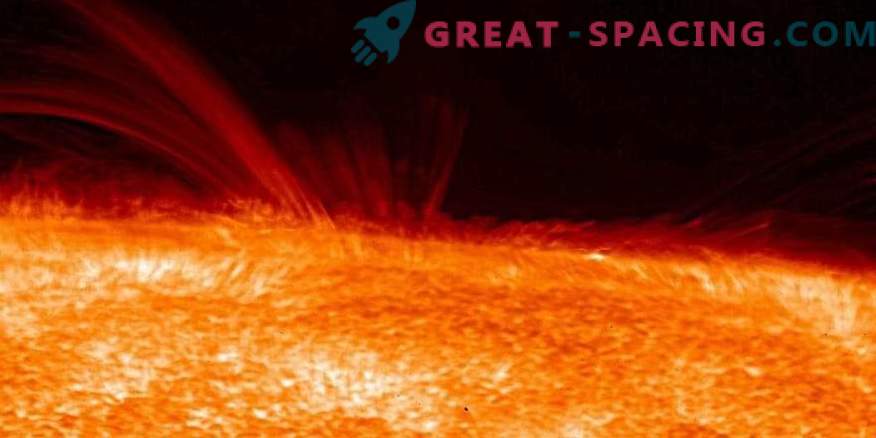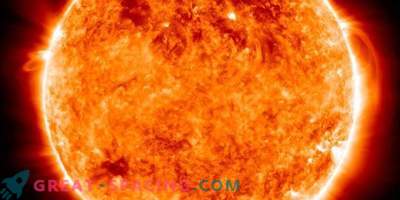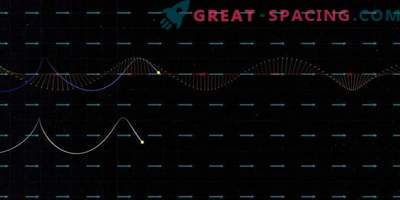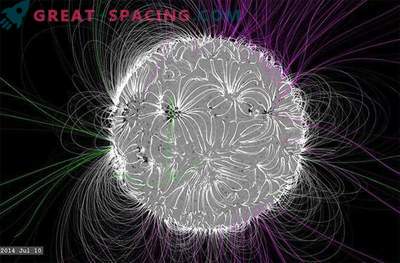
Image produced by NASA IRIS spectrograph. In the solar layer can be seen a huge number of jets jumping over the surface. At the bottom of the stream are visible on the solar disk in the form of filamentary structures with a short period of activity
Computer models and simulations have shown that the presence of neutrals in a gas simplifies the penetration of magnetic fields through the surface, forming spicules. At any moment, 10 million wild solar snakes awake in the sun. These are spicules and, despite such an abundance, the researchers did not understand how they manage to form and not to influence the heating of the upper layers.
In a new study, scientists modeled the creation of spicules. To do this, combine the data of the IRIS spectrograph and telescope in La Palma. They also involved computer simulations, the code for which has been functioning for 10 years. Researchers are making a comparison to see how well the models work. The plasma dynamics was taken as a basis - a hot gas of charged particles flowing along magnetic fields. Earlier versions considered the external area as homogeneous. But no one had noticed the spicules before.
Scientists believe that neutral particles are the key. It turns out that in cooler areas the plasma loses homogeneity. Some particles remain neutral, which means they are not influenced by magnetic fields. Only with the addition of neutral elements did the magnetic fields begin to flow freely, because they facilitate buoyancy.
This is a vivid example of a breakthrough created by combining powerful number-theoretic methods and data from a supercomputer. The updated model also demonstrated energy transfer. It turns out that in such a process the energy is high enough to create Alfven waves, which are the key to the heating of the atmosphere and the movement of the stellar wind.











































